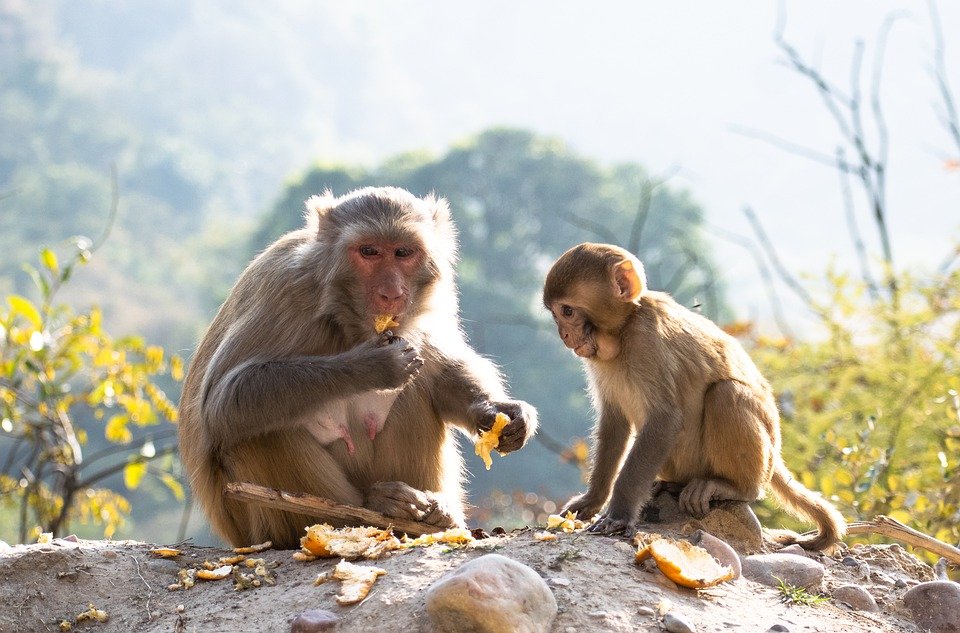Monkey
What is known about monkeys is that they are mysterious, mischievous, and magnificent creatures. Any monkey can adapt to different environments depending on its homeland. Some of them are terrestrial like mangabeys, some others are baboons like macaques, but most of them are arboreal. Monkeys in general use their feet and hands to climb trees and hold on to branches. However, some arboreal monkeys can also use their tails. These tails can be used to pick up small things or to grab a tree branch.

Scientists have divided monkeys into 2 groups: New World monkeys and Old World monkeys. New World monkeys are found in South America, Central America, and Mexico. Squirrel monkeys, capuchin monkeys, howler monkeys, spider monkeys, and woolly monkeys are some examples of New World monkeys. Old World monkeys are found in Asia and Africa. Colobus monkeys, baboons, macaques, mangabeys, and guenons are some examples of Old World monkeys. Furthermore, there are also some monkeys, who live in New World habitats like tamarins and marmosets, but they are in their own groups as they have very different features.
Some characteristics of New World and Old World monkeys:
- Tails: Monkeys, in general, have tails, but the Barbary macaque, who is an Old World monkey, has no tail. On the other hand, some New World monkeys have prehensile tails like spider monkeys.
- Rump pads: New World monkeys don’t have sitting pads on their rumps, but some Old World monkeys do have like drills.
- Cheek pouches: All New World monkeys do not have cheek pouches. On the other hand, some Old World monkeys like Macaques have cheek pouches, where they can stuff the food on the run to chew it later.
- Noses: You can know New World monkeys by the shape of their noses, which are round nostrils set far apart. Whereas most Old World monkeys have small curved nostrils set close together.
Overview:
- ORDER: Primates
- CLASS: Mammals (Mammalia)
- SPECIES: 315
- GENERA: 43
- FAMILY: Cercopithecidae (Old World monkeys), Atelidae (spider and howler monkeys), Pitheciidae (saki and titi monkeys), Aotidae (night monkeys), Cebidae (New World monkeys), and Callitrichidae (tamarins and marmosets)
DIET AND HABITAT
Baboon monkeys live in rocky hillsides, open wooded areas, and savannas. They spend most of the time on the ground, but they can climb trees. Japanese macaque monkeys live in snowy areas as they love snow. Golden and Geladas monkeys are mountain dwellers. But most monkeys live in the savannas of Africa, or the tropical rainforests of South and Central America, Africa, and Asia.
Monkey hands and feet are so flexible, which allows them to travel through little and tiny branches. While monkeys travel, they also help in dispersing seeds and pollinating flowers. Furthermore, some monkeys are able to swim, and they do that for 2 main purposes: getting food or avoiding predators.
There are also some owl or night monkeys, who can see in the dark very well. They also have the ability to communicate by calls or scents.
FAMILY LIFE
There are monkey groups called troops traveling looking for food every day. Their group can include a few members to more than a thousand.
Another groups of monkeys, called harems, engage in mutual grooming every day to keep a family bond. However, each group of this species contains baby monkeys, many adult females, and one adult male! Furthermore, there are also some groups, that are created by bachelors, unattached adult males.
There are also some types of monkeys, who have newborn monkeys with different characteristics. For instance, white newborn colobus come from black adult ones; and black adult langurs give birth to orange newborn babies.
Monkey world is full of different breeds, each breed has its own characteristics, but what is mutual between all monkeys is that they almost do not live in Europe as the weather and climate are not suitable for them.
Share this to let other people know about it!
